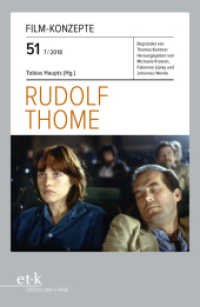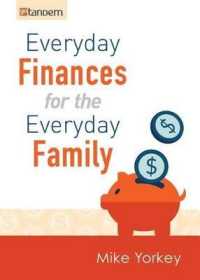- ホーム
- > 洋書
- > 英文書
- > History / World
Full Description
The Stone-Campbell Movement was created in 1832 when Barton Stone's "Christ-ians" from the West merged with Alexander Campbell's "Reforming Baptists." By the beginning of the Civil War it was the sixth largest religious movement in the United States, and in the twentieth century the movement split into the three main branches that exist today. In recent years, scholars from these branches have worked to better understand their nineteenth-century roots, creating the historical sub-field "restoration history" in which historians and other scholars debate the influence of Stone and Campbell on specific characteristics of the existing branches.
Bringing new insight into that debate, Jim Cook uses the writings of both Stone and Campbell to show that Stone was not a viable leader of the movement after 1832 and that his ideas were not part of what influenced the twentieth-century branches of the movement. This study demonstrates that the debates going on between "restoration historians" are thus predicated on the false assumption that Stone influenced people within his movements and proves that Stone was an outsider in the movement that bears his name.
Contents
Introduction
Chapter One: The Stone Movement and the Campbell Movement
Chapter Two: Alliance in Word Only
Chapter Three: The Christian Connexion's Stone
Chapter Four: Stone's Universalism, Campbell's Particularism, and a Restoration Nostalgia at Home and Abroad
Chapter Five: Pacifism, Poverty, and Exclusion
Conclusion







